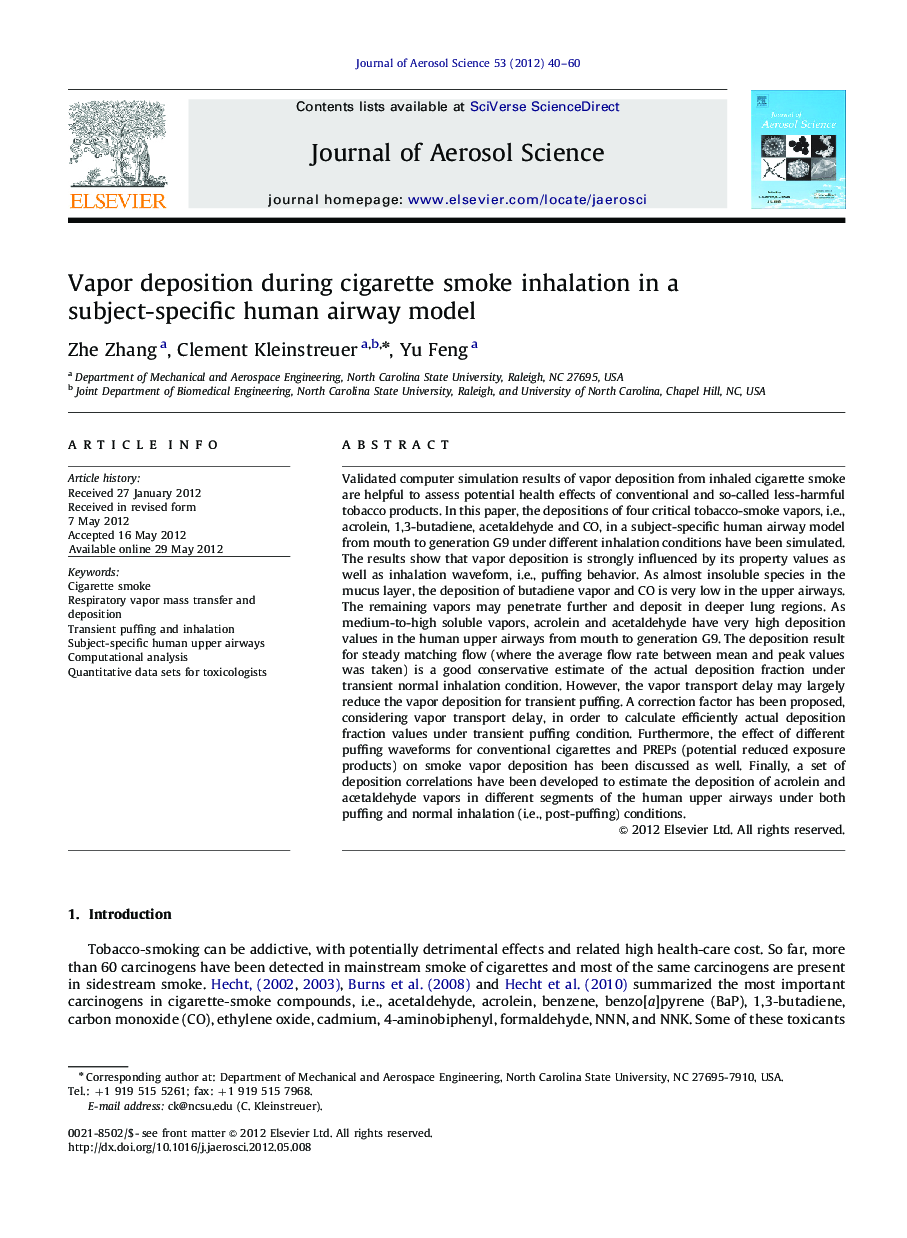| Article ID | Journal | Published Year | Pages | File Type |
|---|---|---|---|---|
| 4452538 | Journal of Aerosol Science | 2012 | 21 Pages |
Validated computer simulation results of vapor deposition from inhaled cigarette smoke are helpful to assess potential health effects of conventional and so-called less-harmful tobacco products. In this paper, the depositions of four critical tobacco-smoke vapors, i.e., acrolein, 1,3-butadiene, acetaldehyde and CO, in a subject-specific human airway model from mouth to generation G9 under different inhalation conditions have been simulated. The results show that vapor deposition is strongly influenced by its property values as well as inhalation waveform, i.e., puffing behavior. As almost insoluble species in the mucus layer, the deposition of butadiene vapor and CO is very low in the upper airways. The remaining vapors may penetrate further and deposit in deeper lung regions. As medium-to-high soluble vapors, acrolein and acetaldehyde have very high deposition values in the human upper airways from mouth to generation G9. The deposition result for steady matching flow (where the average flow rate between mean and peak values was taken) is a good conservative estimate of the actual deposition fraction under transient normal inhalation condition. However, the vapor transport delay may largely reduce the vapor deposition for transient puffing. A correction factor has been proposed, considering vapor transport delay, in order to calculate efficiently actual deposition fraction values under transient puffing condition. Furthermore, the effect of different puffing waveforms for conventional cigarettes and PREPs (potential reduced exposure products) on smoke vapor deposition has been discussed as well. Finally, a set of deposition correlations have been developed to estimate the deposition of acrolein and acetaldehyde vapors in different segments of the human upper airways under both puffing and normal inhalation (i.e., post-puffing) conditions.
► Deposition of selected tobacco-smoke vapors during transient puffing and post-puffing in human airways was simulated. ► The actual deposition fraction of vapors, considering both transient puffing and normal inhalation, can be reasonably estimated when assuming steady-state matching flow and corresponding time delay correction factors. ► The impact of different puffing waveforms on vapor deposition was also analyzed.
